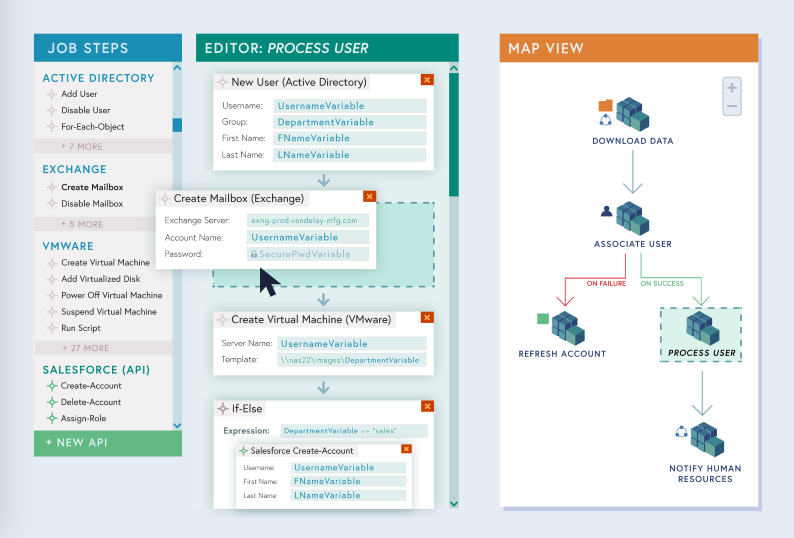Recommended Reasons On Picking Low-Code Platform Info
Wiki Article
Accessibility Of Low-Code Applications Is One Of The Biggest Advantages.
Low-code development of applications significantly increases accessibility for non-developers. Often, they are referred to as "citizen developers" because of several important factors: Intuitive Visual Interfaces:
Drag-and -Drop Builders. Low-code platforms include drag-and -drop interfaces. This gives non-programmers the ability to create applications visually, without writing code. This makes the process of developing easier for people with technical background.
WYSIWYG editor: "What you see is the result you get" editors let users design interfaces, workflows, and other functions in a manner that is similar to the final outcome. They are simpler to comprehend and utilize.
Simple Workflow and Logic Design:
Visual Workflow Design: Users are able to easily create business processes and application logic using flowcharts, models and diagrams. They are easier to implement than traditional coding.
Pre-built Logic Components: Low-code platforms include logic components that are pre-built (e.g. conditional statements and loops) that can be configured easily and without the need for complex programming.
Templates and components that can be reused:
Templates for libraries of pre-built templates Numerous low-code platforms have an application library that can be used for the most common kinds of software, giving non-developers to have a foundation to build upon and then modify.
Reusable modules and widgets: The creation of a website is simplified through the use of reusable components and modules. This means that there is less need for deep technical knowledge.
Guided Development and Tutorials
Step-by-Step Guides: Platforms usually provide guided development paths, tutorials, and on-screen guidelines to assist novice developers in creating applications.
Interactive Tutorials Interactive tutorials that are hands-on and interactive assist users in learning by doing, increasing their comprehension and confidence using the platform.
Integration with existing tools
Seamless Integration: Low-code platforms are designed to seamlessly integrate with existing tools and systems in the business (e.g. the ERP or CRM) that permits non-developers to build applications that work with current workflows.
APIs Connectors, APIs: These tools simplify integration by allowing non-developers (or even users) to connect their apps with external services.
Collaboration Features:
Team Collaboration - Features such as real-time collaboration between teams and shared workspaces enable non-developers to work effectively alongside analysts, professionals, analysts and other the other stakeholders.
Role-based Access Control: You can assign non-developers roles that have the right access level, so that they can participate in the development process while not hindering security or the functionality.
Automated Testing and Debugging:
Low-code platforms often come with integrated testing and debugging tools that makes this process easier. Non-developers are now able to ensure their application works correctly.
Platform detects problems when they occur and offers fixes. This assists non-developers in troubleshooting.
The general rule is that low-code application development is able to make development more accessible to everyone. This is a major benefit for those who aren't developers. Low-code platforms offer intuitive visual tools, guided experiences and enable business users actively participate in developing, maintaining and updating applications. View the most popular she said for Low-code Platform for application development for more tips including push notifications, cross platform app dev, develop web app, cross platform mobile app development, application modernization software, azure sql databases, multiplatform mobile app development, microsoft azure sql, rapid application design, no code platforms and more.

Low-Code App Development Has Many Benefits In The Area Of Cost-Effectiveness.
Low-code applications offer a variety of advantages when it comes to cost-effectiveness. Companies trying to cut costs are able to benefit from this method while still delivering high-quality applications. Here are a few of the most important advantages:
Lower Coding Requirements: Low coding platforms eliminate the requirement to code by hand and save developers time and money. This translates into lower costs for labor.
We require fewer developer resources. Low-code development requires less time and is more simple. This means that less developers are needed. This could drastically cut costs of staffing and hiring.
Speedier Time to Market
Accelerated Development: Low-code platforms offer visually-based development tools, components that are pre-built, and other features that enable rapid development of software. Businesses can bring their products to market faster. This could result in faster revenue generation and improved position in the marketplace.
Rapid prototyping: By developing and testing prototypes quickly, businesses can reduce the amount of time they invest in the development stage and also allow for faster revisions based on user feedback.
Reduce the cost of maintenance
The modular structure and standard components of apps developed using low-code platforms makes them simpler to maintain. This can reduce the expense of maintenance and ongoing support.
Automated Updates Many low-code systems are capable of managing patches and updates in a manner that's safe and efficient. This means that there is no need to manually intervene.
Efficient Resource Utilization:
Contributions from non-developers Low-code platforms enable non-developers and business users to be involved in the process of developing. This democratization in development allows businesses and employees to cooperate, and reduces the dependence on highly paid developers.
Optimized Use Of IT Resources IT teams can focus on strategic initiatives instead of being bogged with routine work on development, thereby increasing productivity and overall efficiency.
Scalable Pricing Models
Subscription Pricing: Many platforms with low-code support flexible pricing models that are based on subscriptions which are scalable in accordance with the amount of usage. This allows businesses to make sure that their budget is in line with their actual needs and increase.
Pay-As-You-Go: A few platforms provide pay-as-you-go options. This allows businesses to only pay for the resources they actually use. This is especially beneficial for small businesses and startups that have limited funds.
Reduction of Third-Party Costs for Software:
Built-in Functionalities: Low-code platforms often come with built-in functionalities and integrations that eliminate the requirement for third-party software and tools resulting in cost savings on licensing fees and subscription costs.
Pre-Built Integrations: The accessibility and pre-built integrations of popular systems and services reduces the requirement for custom development and saves time and money.
Increased ROI
More efficient return on investment (ROI) by the combination of rapid development, reduced costs and a shorter time to the market, businesses can achieve a faster ROI for their applications.
Improved Agility - Businesses are able to quickly adjust to changes in the market and changing customer needs. This helps them remain relevant and capitalize on opportunities that arise.
Training costs are cheaper:
User-Friendly interfaces: Low-code platforms provide user-friendly and easy interfaces that reduce the learning curve. They also reduce the requirement for long-running training programs.
Accessible resources A lot of low-code platforms offer comprehensive tutorials, training materials, and community assistance and help, which can reduce the need for formal instruction.
Collaboration can be made easier.
Collaboration Tools: Collaboration tools integrated enhance communication and coordination between teams, which results in more efficient process for development and reduced cost of operations.
Unified Development Environment. A single, unified software development environment can streamline processes and reduce the cost and complexity of managing different platforms and tools.
The overall cost-effectiveness of low-code software development can be attributed to its capability to cut down on the cost of maintenance and development as well as increase the time to market as well as optimize the use of resources and provide flexible price models. These factors provide substantial economic rewards for businesses. Low-code is a fantastic option for businesses that want to maximize budgets but still create robust, scalable and top-quality software. Read the top Enterprise application development with Low-code Platform examples for site recommendations including application modernization software, rapid app development, database in azure, paas service, application development platforms, develop web app, microsoft azure sql, application modernization software, app modernization, mobile app development platforms and more.

Benefits Of Developing Applications Using Low-Code In Terms Of Vendor Support And Community
Low-code platform development provides significant advantages, such as vendor support and community. This is vital in ensuring successful application development as well as ongoing maintenance and constant improvement. Here are a few of the main benefits: Vendor support
Comprehensive Technical Support:
Support Teams with Dedicated Support Many low-code platforms offer special support teams that are able to assist in technical problems, problem-solving, and guidance. This helps ensure that any issues will be quickly solved.
Certain vendors offer support 24 hours a day. This can be very advantageous for companies operating in different time zones.
Training and onboarding:
Structured Training: A number of providers offer structured training including webinars, tutorials and certification classes to aid users in becoming comfortable with the platform.
Personalized onboarding: Many vendors have tailored services for new customers to assist them in implementing the platform properly and to tailor it to suit their needs.
Regular Updates and Enhancements:
Continuous Improvement: Low code platform vendors regularly release updates that include updates to security patches, features and improvements to performance. This helps ensure that the platform will always be current and safe.
Feedback Integration: A lot of vendors incorporate user input into their development cycles. This helps ensure that the platform can adapt to the changing requirements and desires of its users.
Comprehensive Documentation:
Documentation: Comprehensive documentation is available for most products. It covers everything from the basics to advanced customization. It helps users locate solutions for themselves.
API References Comprehensive API documentation enables developers to create custom applications and integrate low-code platforms into other systems.
Professional Consulting Services
Expert Consultation : Vendors offer consultancy services, including designing architecture and complex implementations. They offer this service in order to make sure that their users are able to benefit from the platform.
Custom Development: Some vendors provide services that permit the development of specific features or the features, but they aren't available from the beginning.
Community Support
Active User Communities:
Discussion boards and forums: Many low code platforms have active online communities that let users ask questions, exchange solutions and work together on best practices.
User Groups and Meetups: Both local and virtual meetings and groups of users offer opportunities to learn to network, share information, and exchange experiences with others.
Collaboration and Knowledge Sharing
Community-Contributed Resources: Users often share templates, modules, and extensions that they have developed, which can be reused or adapted by others, accelerating development and innovation.
Crowdsourced Problem Solving: The collective wisdom and experience of the community can be an invaluable resource for troubleshooting issues and finding creative solutions to complex problems.
Learning and Development
Community-led training: Many communities provide webinars, workshops, and training sessions led by experts in the field.
Online Tutorials and Courses The community members develop and publish tutorials, online courses and step-by-step guides. This enhances the educational resources accessible to all users.
Feedback and Influence
Forums for Product Feedback: These forums often include channels for providing feedback to the manufacturer that can affect the creation of new features and improvements.
Beta Testing Programs. Active community members can be part of beta-testing programmes. They will have early access to the new features on the platform as well as an the chance to influence its evolution.
Recognition and Assistance:
Many vendors offer community recognition programs, for example MVP programs (Most Valuable Professional), to recognize the efforts of their members who are active in their respective communities.
Peer Support: Members of the community often offer peer support by sharing their expertise and offering advice for those who aren't as experienced. This creates a supportive, supportive environment.
In the end, the combination of of robust vendor support with an active and engaged community results in a comprehensive support eco-system to develop low-code applications. The developers will have the knowledge and resources they need to build the application, deploy it and keep it running. application.
